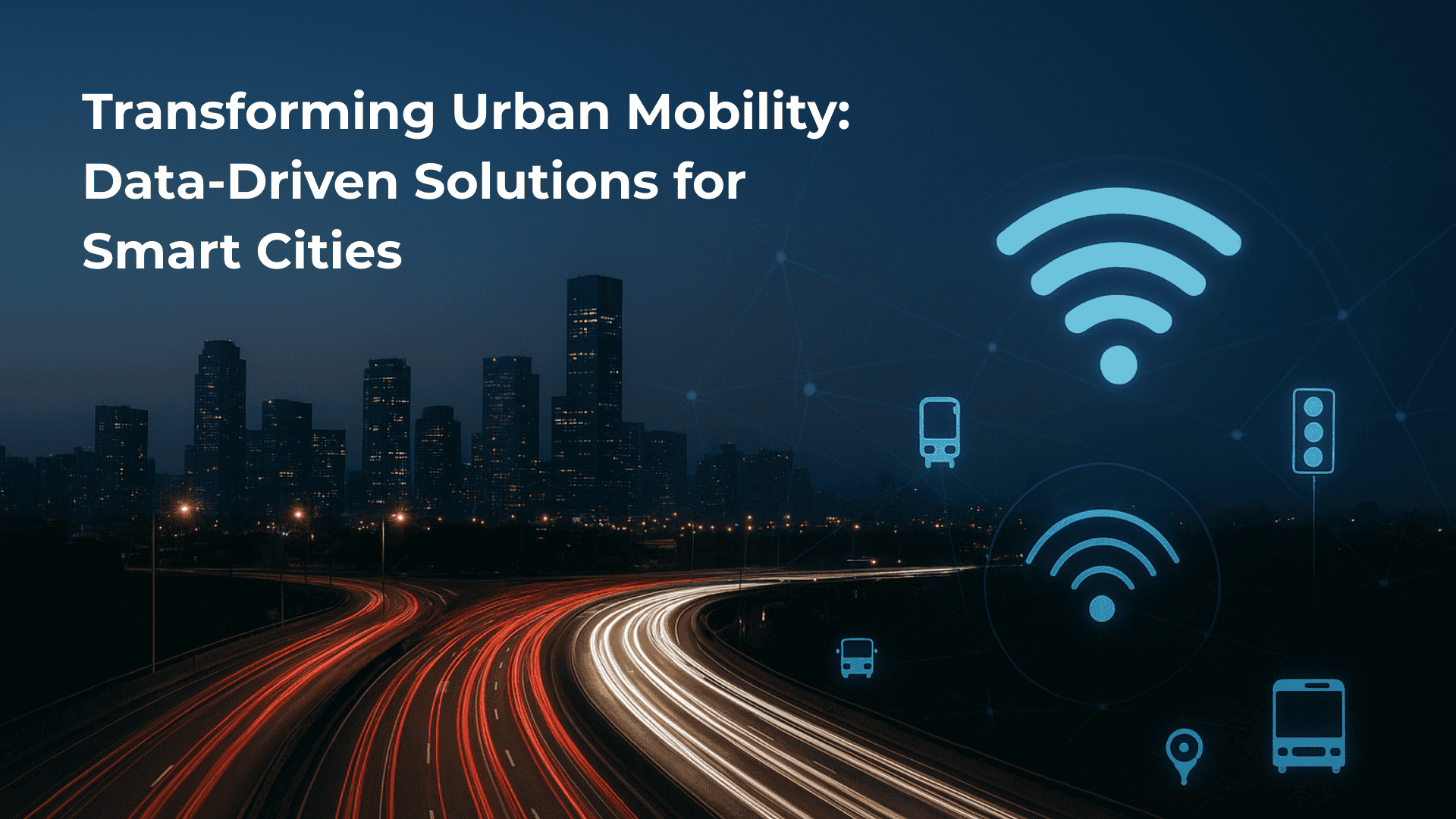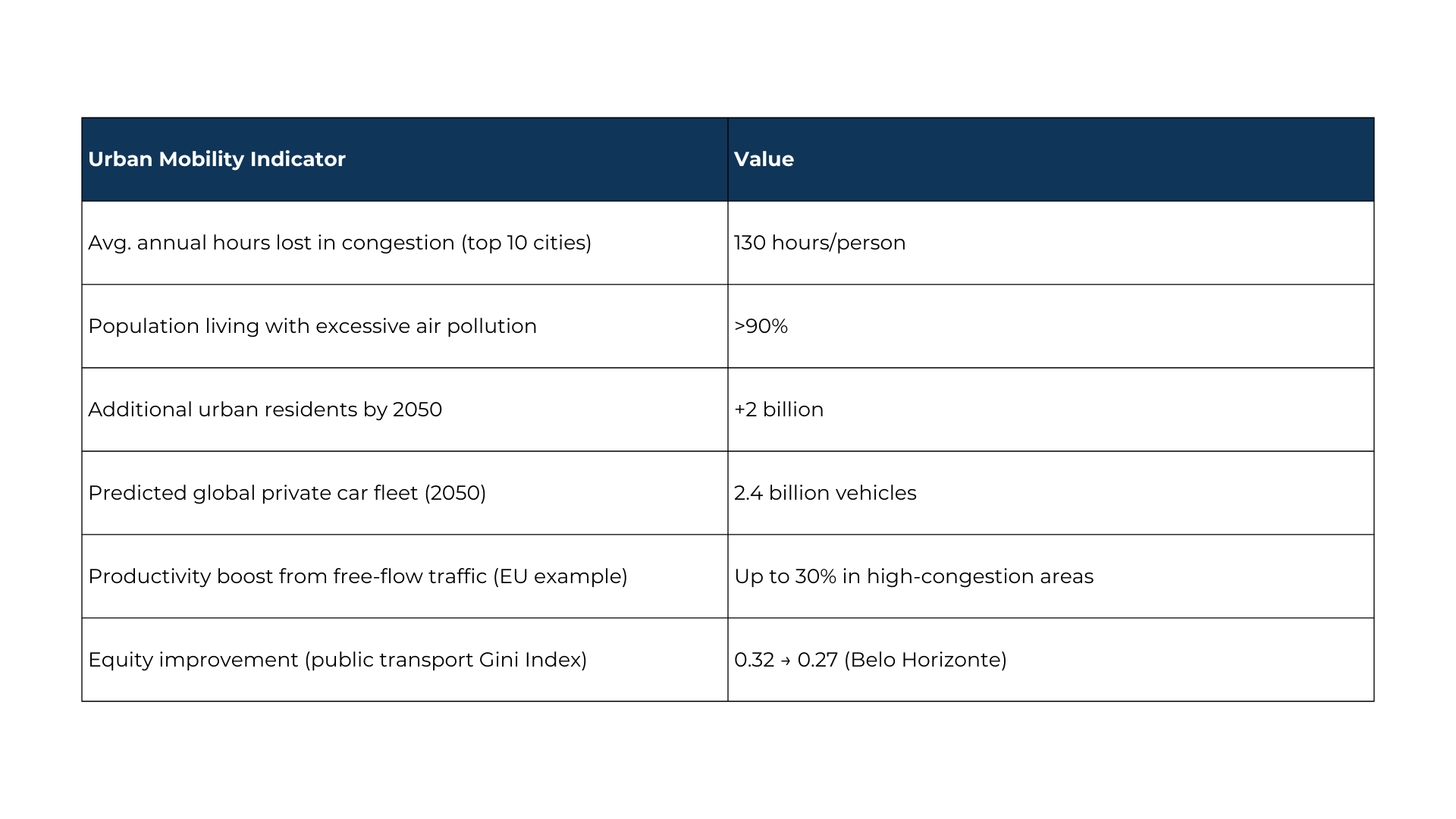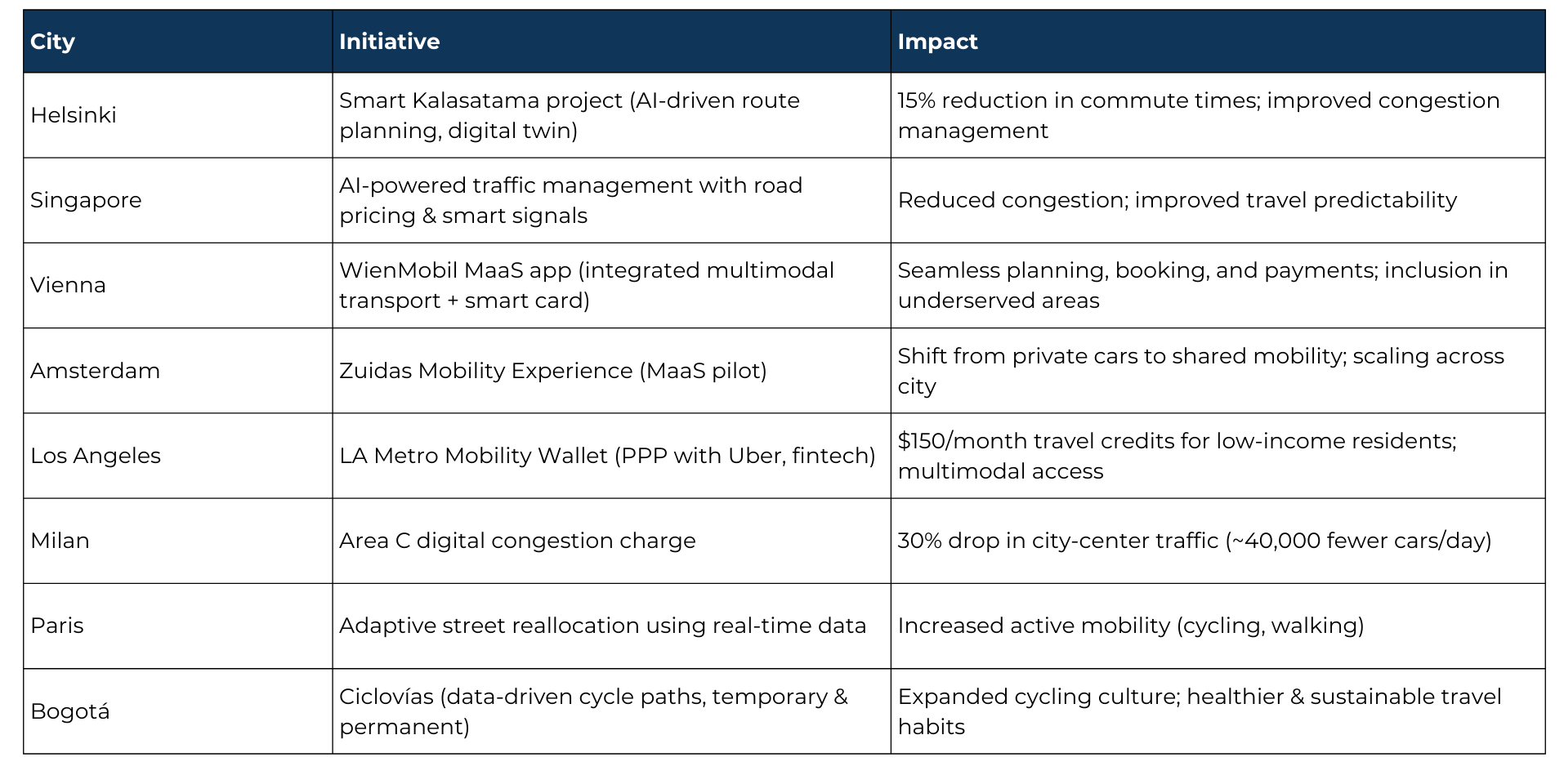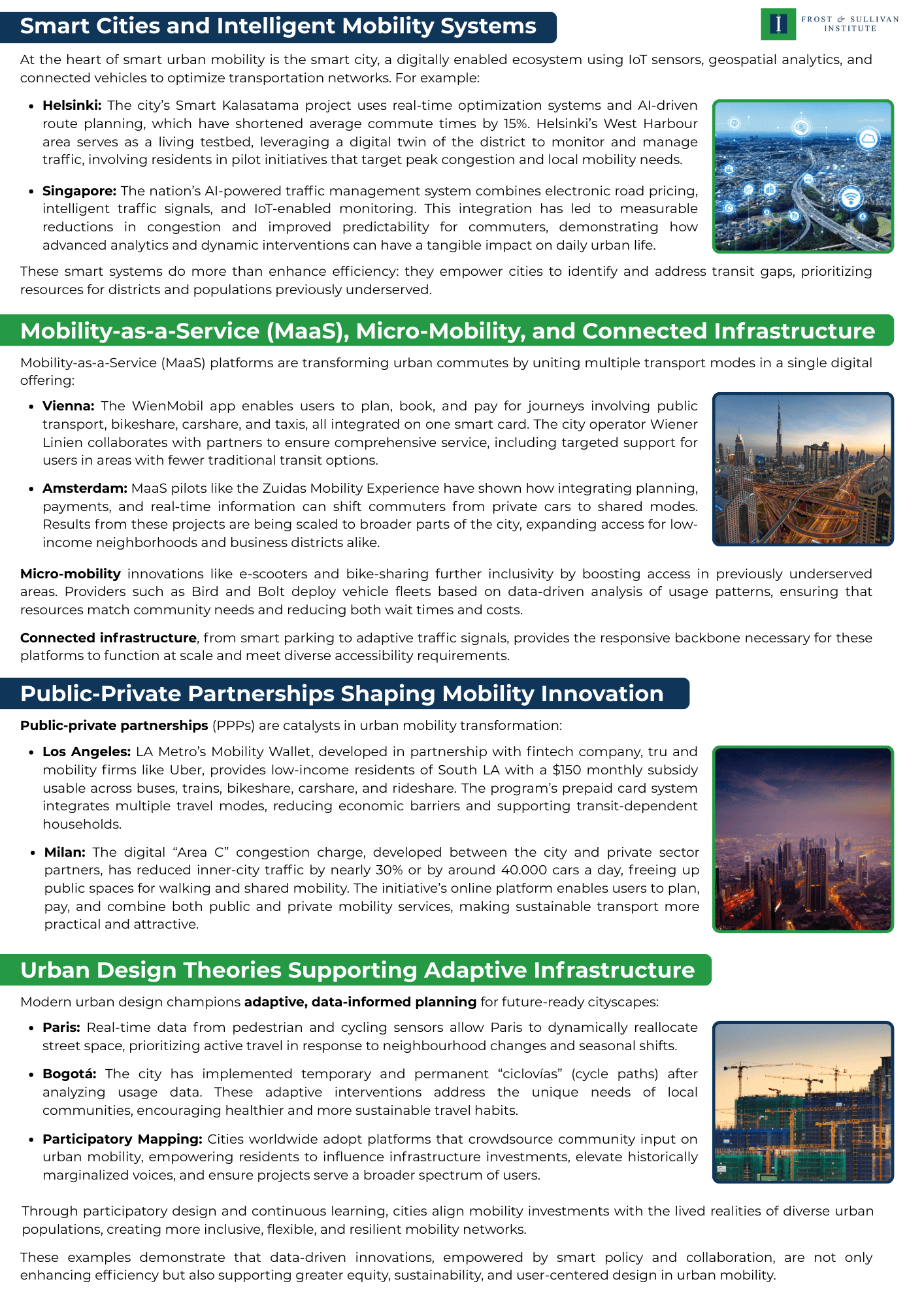
19 Aug Transforming Urban Mobility – Data-Driven Solutions for Smart Cities
Urban mobility has emerged as one of the most pressing global challenges, sitting at the nexus of economic vitality, public health, and environmental sustainability. Congestion costs the global economy hundreds of billions annually, while transport-related emissions account for nearly a quarter of total greenhouse gases. The urgency is compounded by surging urban populations, an expected jump in global private car ownership to 2.4 billion vehicles by 2050, and rising inequities in access to reliable, affordable transport. More than 90% of the global urban population lives amid air pollution levels above WHO standards, with cities like Riyadh exceeding safe limits fivefold.
Urban mobility is central to the Frost & Sullivan Institute’s mission of Innovating to Zero; a vision of cities with zero congestion, zero emissions, and zero exclusion. Achieving this requires systemic transformation, where emerging technologies such as IoT-enabled networks, AI-driven optimization, and Mobility-as-a-Service act as pivotal enablers rather than incremental upgrades. Cities embracing data-driven mobility ecosystems are already proving that when technology is paired with policy innovation and inclusive design, urban transport can be redefined for greater efficiency, sustainability, and equity.
Key Statistics at a Glance:

Theoretical Foundations and Trends
Table 2: Global Best Practices in Data-Driven Urban Mobility


Building Zero-Congestion, Zero-Emission, Zero-Exclusion Cities
The path toward future-ready mobility lies in data-driven, human-centered ecosystems that seamlessly integrate technology, infrastructure, and policy. The case studies of Helsinki, Singapore, Vienna, and Los Angeles prove that cities can significantly reduce congestion, cut emissions, and expand accessibility when digital innovation and inclusive design converge.
To accelerate progress, cities and stakeholders should adopt the following best practices and recommendations:
- Adopt Mobility-as-a-Service (MaaS) at Scale
Integrate public and private transport into a unified digital platform, enabling seamless trip planning, booking, and payments. Prioritize inclusion by ensuring subsidies or credits for low-income residents, as demonstrated in Los Angeles. - Leverage Real-Time Data for Adaptive Design
Implement dynamic infrastructure that reallocates road space for walking, cycling, and shared modes based on demand patterns. Paris and Bogotá highlight how adaptive design can improve safety, reduce emissions, and encourage healthier lifestyles. - Incentivize Mode Shifts with Pricing Innovation
Deploy congestion pricing and smart tolling schemes, combined with reinvestment of revenues into public transit and active mobility infrastructure. Milan’s Area C program proves that economic levers can rapidly curb private car dependence. - Scale Micro-Mobility for First- and Last-Mile Access
Expand bike-sharing, e-scooters, and other micro-mobility services through data-driven deployment, ensuring underserved neighborhoods gain equitable access to the broader transport network. - Strengthen Public-Private Partnerships (PPPs)
Foster long-term collaboration with technology providers, fintech firms, and mobility operators to accelerate innovation while keeping equity and sustainability at the forefront. - Embed Participatory Planning into Mobility Strategies
Use crowdsourced mapping and community engagement platforms to ensure infrastructure investments reflect local realities, particularly for historically marginalized populations.
The future of urban mobility will be defined by cities’ ability to innovate to zero; eradicating congestion, eliminating transport-related emissions, and ensuring no community is excluded from access to efficient mobility. By embracing digital technologies, equitable policies, and adaptive urban design, cities can transform mobility into a driver of sustainable growth, healthier environments, and inclusive prosperity.
Blog by Asha Sridar,
Manager, Frost & Sullivan Institute
